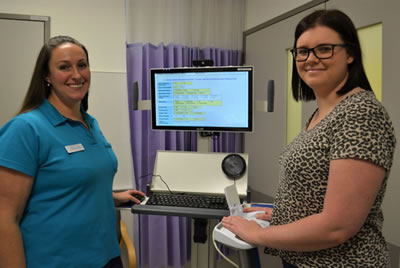Considered one of the most significant digital projects in the Electronic Medical Record (eMR) program, the Fluid and Infusion Management solution (FIM) has been implemented in rural Local Health Districts (LHDs) to improve patient safety and provide addition clinician support.
Part of a statewide roll out for inpatient and acute services, FIM removes the need for paper infusion charts, and allows clinicians to prescribe, administer, and manage fluid and infusion orders, or ‘continuous infusions’ in the Electronic Medical Record (eMR), alongside a patient’s regular medications.
Developed by eHealth NSW, it covers intravenous/subcutaneous fluid therapy, electrolyte maintenance/replacement therapy, and all infusions which are ordered on the NSW Adult/Paediatric Fluid Order charts.
FIM program improves patient safety
The program has been introduced into all rural LHDs, including Residential Aged Care Facilities (RACF) and Multipurpose Services (MPS) sites, with the rollout to Mid North Coast planned for the end of 2022.
As well as providing a digital solution to improve patient safety, FIM provides prescribing support for clinicians and administration support for nurses.
Dr Vimbai Kapuya at Yass Hospital said: “It makes sense that fluids should be on an online pathway, along with medications. It makes things easier. When I order the medications electronically, I can also order the fluids. We have everything in one place.
Dr Kapuya is also part of the telehealth team for the Virtual Rural Generalist Service (VRGS) at Western New South Wales LHD and adds, “As one of a group of doctors treating patients in rural sites in remote areas, I used to have to find the correct form required for the fluid for a patient, and then fax it to the site. It was a much longer process. With the Fluid and Infusion Management Solution it’s quicker, easier and clearer.”
Digital solution enhances care
Along with efficiency, there are also the safety benefits of FIM. “It’s safer for patients. Before FIM, we used paper charts. Now that it’s digital, the countersigning of fluids is more efficient, and it’s very clear what fluids are being ordered. With paper charts there were errors when bad handwriting meant doctors and nurses couldn’t understand what was being ordered. For younger patients, I have found FIM provides an extra layer of safety,” adds Dr Kapuya.
The FIM roll out faced some unforeseen pressures and constraints due to the COVID response and its impact on staff availability in LHDs and at eHealth NSW. To manage these pressures, flexible training models were introduced for clinicians, including virtual training.
Floods in northern NSW also caused infrastructure issues. Despite these impacts, go-lives still occurred, thanks to the ongoing effort of Local Health Districts and eHealth NSW.
The complete FIM package includes a fluid and Infusion solution for NSW Health Hospitals, Paediatric PowerPlans, automation for fluid balance calculations, and reporting functions to monitor performance and management.




